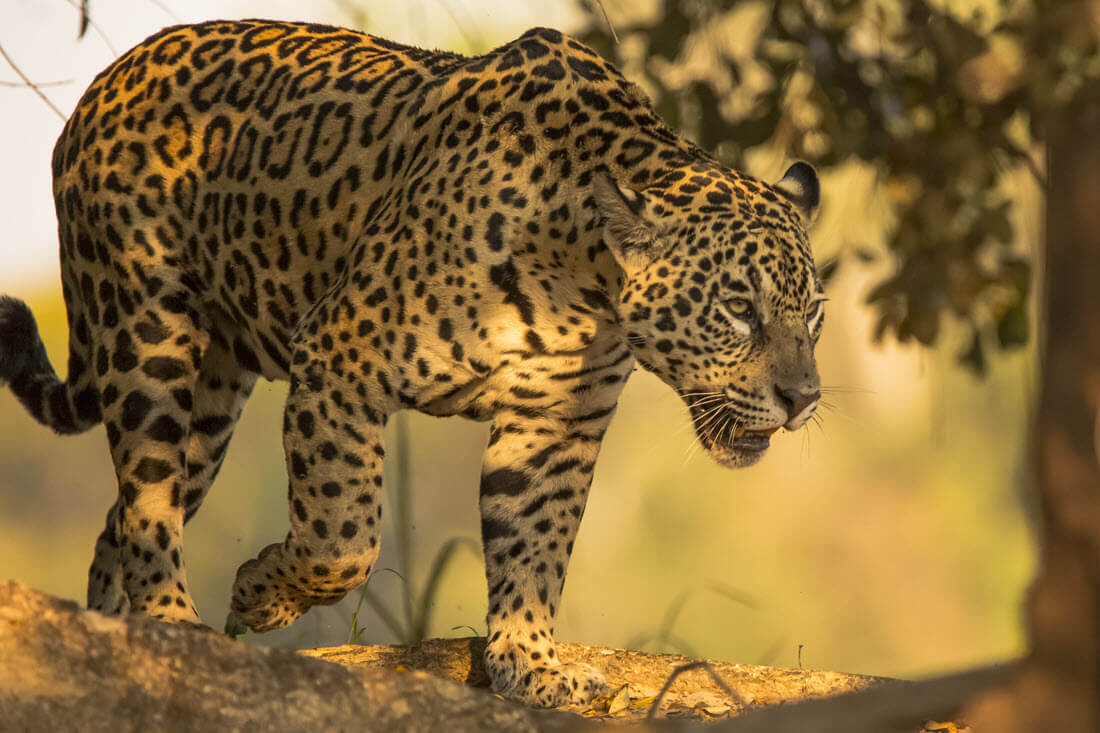November 29th, 2021 is International Jaguar Day, a celebration of the jaguar as a cultural symbol, and the critical role this big cat plays in maintaining a healthy, balanced eco-system.
International Jaguar Day is an annual event. It was proposed by attendees of the Jaguar 2030 Forum (March 2018) with the “goal of celebrating jaguars as an icon for sustainable development, raising awareness and public support for jaguar conservation, and consolidating conservation efforts by range countries and partners.”
The purpose of the forum was to discuss how to protect the jaguar and its habitat. Representatives from 14 range countries participated in the event, along with various partnering organizations. The forum led to the creation of The Jaguar 2030 Conservation Roadmap for the Americas.
Roadmap objectives included:
- Strengthening the Jaguar Corridor across range countries by securing 30 locations by 2030
- Stimulating sustainable development
- Reducing jaguar-human conflict in human dominated areas.
More about the Jaguar
The jaguar is the largest wild cat in the Americas and the third largest big cat in the world. The word ‘jaguar’ means ‘he who kills with one leap’.
 You can find jaguars in 18 countries, from Mexico to Argentina. They are occasionally spotted in southern Arizona, mostly along the US-Mexico border. The jaguar’s original range may have encompassed territory all the way to the Grand Canyon.
You can find jaguars in 18 countries, from Mexico to Argentina. They are occasionally spotted in southern Arizona, mostly along the US-Mexico border. The jaguar’s original range may have encompassed territory all the way to the Grand Canyon.
Jaguars (Panthera onca) have a strong, muscled body with stocky legs, a large heard and powerful jaw. They vary in size depending on their location. Generally they weigh from 120 to over 200 lbs., are approximately 26 to 30 inches tall at the shoulders, and 3 ½ to 6 feet in length. The jaguar’s tail is 2 to 3 feet long, which is considered somewhat short compared to the size of its body.
The jaguar’s fur is pale yellow to yellow-brown, with spots called rosettes. Jaguars are similar in appearance to leopards, but with a different pattern of spots. Some jaguars have all-black fur. These are melanistic (increased dark-colored pigment) jaguars generally known as black panthers. White jaguars have also been seen.
Jaguars are meat-eaters. They prey on rodents, sloths, armadillos, anteaters, deer, peccary, elk, rabbits, raccoon, turtles and other reptiles. They live in many different environments, including forests, wet grasslands, savannas, and mangrove swamps.
According to the IUCN Red List of Threatened Species, jaguars are “Near Threatened”, meaning possibly endangered in the near future.
Like most wild cats, the jaguar population is decreasing due to habitat loss and fragmentation, reduced prey, habitat fires, poaching, illegal trade, hunting, and killings to protect livestock. Jaguars have lost more than 50% of their original habitat.
Jaguar Conservation
Wildlife Conservation Society (WCS) is one of several organizations working to protect jaguars by securing large areas for the big cats and their prey, keeping the areas connected and building community-based support for the jaguar and other local wildlife. According to research conducted in 2020, there has been a 6.1% increase in jaguars at WCS sites each year.
The group is also engaged in a challenging program to rewild jaguars along America’s southwest boarder and northern Mexico.
Panthera’s Jaguar Corridor Initiative is another conservation program focused on connecting and protecting core jaguar populations throughout the wild cat’s entire range.
The total number of wild jaguars left in the world is unknown. Estimates range from as little as 15,000 to as many as 170,000.


0 Comments